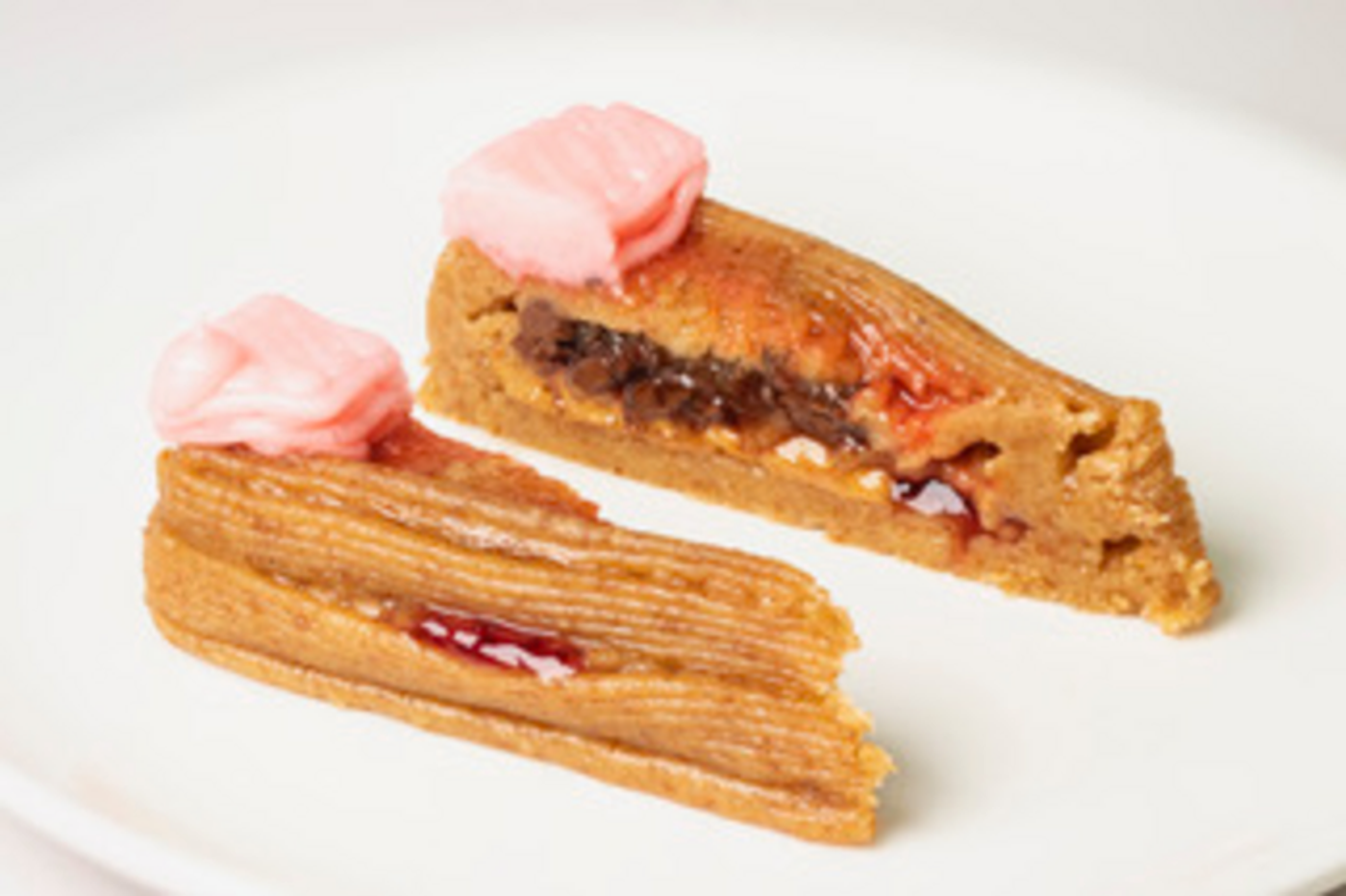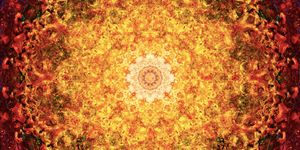The Health Pros and Cons of 3D-Printed Food Technology
Can we create healthier food with 3D printing? This question is what a team of researchers led by Columbia University hope to answer as they examined the health pros and cons of using a 3D printer to make food compared to traditional cooking appliances. This study holds the potential to address the nutritional benefits and drawbacks of 3D-printed food, along with obstacles that would have to be overcome to make the technology commercially viable.
3D-printed cheesecake comprised of Nutella, strawberry jam, and peanut butter made with edible food inks. (Credit: Jonathan Blutinger/Columbia Engineering)
“Because 3D food printing is still a nascent technology, it needs an ecosystem of supporting industries such as food cartridge manufacturers, downloadable recipe files, and an environment in which to create and share these recipes. Its customizability makes it particularly practical for the plant-based meat market, where texture and flavor need to be carefully formulated to mimic real meats,” said Dr. Jonathan Blutinger, who is a postdoctoral fellow in the Creative Machines Lab at Columbia, and lead author of the study.
For the study, the researchers experimented with various designs of cheesecake using a combination of seven ingredients: frosting, strawberry jam, cherry drizzle, Nutella, peanut butter, banana puree, and graham cracker. Their findings indicated using graham cracker as the foundational ingredient for each cake layer resulted in the most successful design. They also discovered that Nutella and peanut butter made the best supporting layers, forming “pools” that successfully held the softer ingredients, jam and banana, which also led to the discovery that multiple ingredients were also found to evolve into multi-tiered structures similar to architectural designs.
“We have an enormous problem with the low-nutrient value of processed foods,” said Dr. Christen Cooper, who is an assistant professor in the College of Health Professions at Pace University, and a co-author on the study. “3D food printing will still turn out processed foods, but perhaps the silver lining will be, for some people, better control and tailoring of nutrition--personalized nutrition. It may also be useful in making food more appealing to those with swallowing disorders by mimicking the shapes of real foods with the pureed texture foods that these patients--millions in the U.S. alone--require.”
Going forward, chefs could use 3D food printing and laser cooking to invent new personalized food experiences since they’ll be able to work at the millimeter scale, thus potentially creating new methods to plan meals for athletes, nursing home dieticians, and parents of young children, as well.
How will 3D printing change the food industry in the coming years and decades? Only time will tell, and this is why we science!
Sources: npj Science of Food, EurekAlert!
As always, keep doing science & keep looking up!









